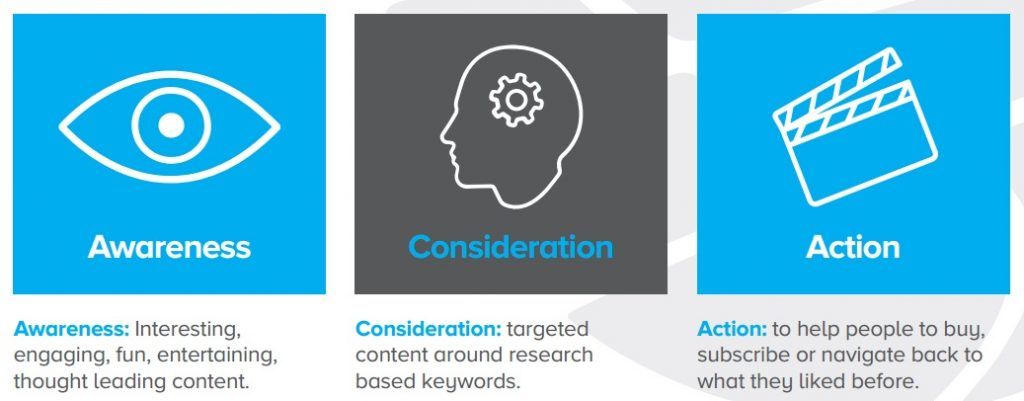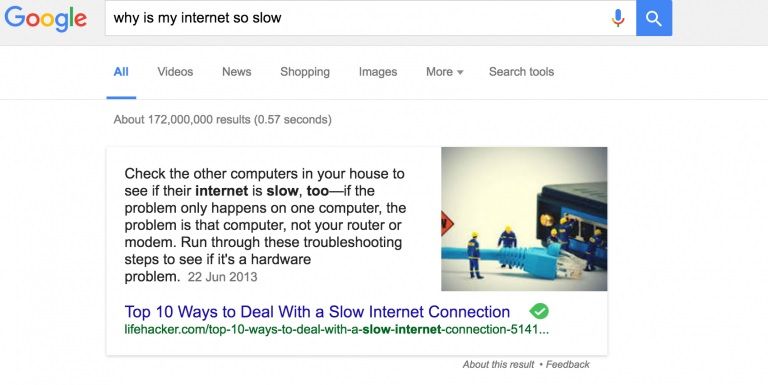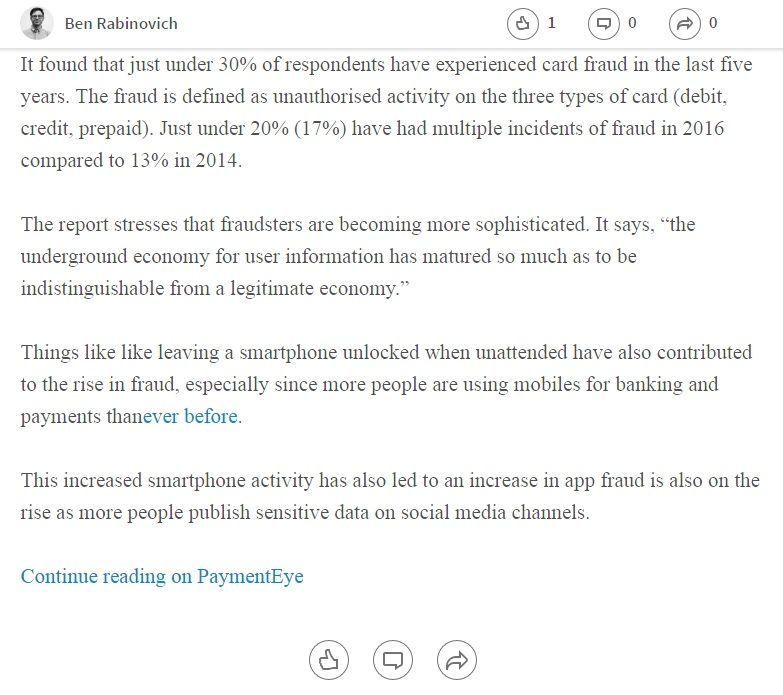12 tips for content marketing from an SEO perspective
How can you create content marketing which works for search, right from the start?
Many of us probably think of SEO as something which is done after the fact: you create your copy, then you think about how to optimise it. But at the Content Marketing Association’s Digital Breakfast last week, Kevin Gibbons from BlueGlass proposed a radically different approach.
To make your content work for SEO, Gibbons’ advice is to “start with the end in mind”. You need to be thinking about promotion from the word go, he said; so that when it comes to publishing your content, you already have a distribution and promotion strategy in mind, and have crafted your content towards that goal.
So how can you carry this out in practice? Here are twelve tips from Kevin Gibbons’ presentation that will ensure your content works for search from beginning to end.
Break down ‘silos’ when creating your team
I’m not the biggest fan of the word ‘silos’; in fact, in seven months of writing about digital marketing and search, I’ve become heartily sick of it. But essentially what it means in this context is bringing people together across different departments – SEO, content strategy, creativity, PR and social media – to work on content.
Content marketing is a team effort, and your team should combine a variety of talents; in Gibbons’ words, “Get the right people on the bus!”
He warned against doing too many different things, and trying to spread yourself too thin. Ideally, you want to put together a team of people who specialise in their different areas, rather than trying to have one or two people be good at everything.
Know your goals
Once you’ve got your awesome team assembled, it’s time to set some goals. First off, understand your brand: what is your purpose and the story you want to tell? What are your core values, and how can you communicate them?
As an example of this, Gibbons cited Apple’s 1997 ‘Think Different’ slogan and the adverts that Apple put together to communicate this message:
Second, know your audience and understand who you are targeting. As John Romero, video game entrepreneur, once said: “Market to your best customers first, your best prospects second and the rest of the world last.”
Thirdly, what’s the aim of your content marketing, and how can you measure and prove it? Success looks different depending on what you’re trying to achieve, and different metrics can be important to measuring different kinds of success.
Are you tracking conversions, traffic, social engagement, equivalent media spend? Are you looking for an improvement in customer support or sales?
Finally, Gibbons recommends creating clear content guidelines to work out what you should and shouldn’t be publishing. “Don’t be afraid to say no – being selective is good to keep focused on what’s really important.”
 Image: BlueGlass
Image: BlueGlass
Do a content audit
Before you strike out and create new content, take stock of what you already have with an audit. Can you improve on it? What worked, and what didn’t go over so well? What has generated the most traffic, or social engagement and links?
Knowing what content you have is also hugely useful in developing a good internal linking strategy, which is key for SEO. And if customers are going to be finding your brand through this content, even just occasionally, it’s important to make sure it’s up to date and relevant!
Don’t create content for content’s sake
They say that every minute on the internet, there are 400 hours of video uploaded to YouTube, 3.3 million Facebook posts, over 400,000 Tweets, and over 1,200 WordPress blog posts published. So how can you differentiate your content amongst so much noise?
Make your content is quality, necessary and worthwhile – don’t just create content for the sake of publishing content. Google’s algorithms prioritise quality content, so publishing less and publishing well, rather than churning out generic content, will help the content that you do have rank better. In the words of copyblogger:
“SEO can’t, by itself, make a popular blog. First, you need remarkable content, and then you optimize it for search engines. Skip the remarkable part, and all the optimization in the world won’t help you.”
Create data-driven content – and make it newsworthy
When putting together your quality, well-crafted content, one thing that Gibbons recommends doing is incorporating data. Find out what data your client has, and look at how you can use that in your content. More data increases your credibility, and data can also be a great hook when pitching to journalists, especially if you can find a good news angle.
Get exclusives for your content (but make sure you’re the source)
This is a tactic that works well if you have data-driven content and/or content with a good news angle. Agreeing an exclusive with a publisher in advance can help to get their buy-in on covering it, plus it helps with additional outreach to other publishers afterwards.
The coverage helps both to amplify your brand and to boost your SEO with backlinks; just make sure that you’re credited as the source!
Create content that answers questions
Creating content which answers your audience’s questions is a sound principle on multiple levels, both in terms of content value and in terms of SEO. First of all, by researching your audience and understanding their pain points, you better understand the people who your content is targeted at.
Secondly (if done well), it allows you to create evergreen, quality content that your audience can come back to repeatedly as a valuable resource.
How-to guides and ‘tutorial’ style content are always a good bet for both audience value and SEO, as people often search with a specific question in mind.
This is particularly true for voice search, where people tend to phrase their searches in the form of a whole question – so Q&A style content is especially well-suited to ranking for voice searches.
A useful tip that Gibbons gave is to start by answering people’s questions on sites like Quora and community forums, which will give you an insight into what they want to know. Then turn your most popular answers into more in-depth content!
Understand what triggers Quick Answers, and play to it
Also known as ‘rich answers’ and ‘featured snippets’, Quick Answers are those informative boxouts at the top of Google search results which quickly supply the information you’re searching for.
Rather than being drawn from the top ranking result on the SERP, they’re drawn from the content that Google thinks best answers the query.
So if you gear your content towards these boxes, they can be a fantastic way to ‘leapfrog’ to the top of search results and get your branding – and content – up there at the top.
Happily, ‘how to’ style content, which we mentioned in the last point, is ideal for this, along with Q&A style content and bullet point lists.
For more on how to hack Google’s Quick Answers, read Jim Yu’s guide to the ABC of Google Quick Answers.
Make the customer the hero
Involve your audience! If you think your content is about you, says Gibbons, you’re missing the point – when people share content, they share it about themselves, not you. And by involving your audience, you have an in-built reason for people to share and talk about your content.
Another speaker at CMA’s Digital Breakfast, Scott Davies, CEO of social TV and advertising company never.no, gave some great ideas as to how this can be used to jazz up a marketing campaign.
For example, when tasked with promoting a fairly boring household item – a mop – never.no asked people to submit their own videos on Vine and Instagram of doing different things with the mop. The result was a plethora of hilarious short videos that made for a great ad.
Another piece of advice that Gibbons gave was to play on people’s egos. Your audience loves to talk about themselves and where they’re from. Play on rivalries between cities, between countries, between areas.
Buzzfeed is a pro at this kind of content, because it’s so shareable – just look at 45 Reasons The North Of England Is Better Than The South, or 31 Reasons To Avoid South London.
Remember that you’re building an audience – not just traffic or links
People like to consume content in different ways, so think about how you can recycle the same content into multiple formats. You could turn an in-depth study into a series of short-form articles, or build up a long article into a downloadable guide or whitepaper. You could create interactive content, infographics or data visualisations, email newsletters, video.
You can use these additional pieces to create “content upgrades” – offering a resource that’s unique to each blog post, or other piece of content, that readers need to submit an email address or share on social media in order to receive.
The result is more value for your audience, more mileage for your content, and a huge boost to your email subscribers or social backlinks. Backlinko has a more detailed guide on how to make and use content upgrades.
Explore relevant syndication partners
Think about where you can cross-post your content both to amplify its signal and to create backlinks. Outlets like LinkedIn and Medium can be great for attracting an audience that your site might not get otherwise.
Just remember two things: one, don’t spread yourself too thin by trying to cover every platform – work out where your audience is, and concentrate on those outlets.
And two, remember that you’re still publishing to someone else’s platform, with their brand and their rules. And even though the traffic is going to your content, it’s still going to their site.
Walled gardens make up so much of the internet that it’s all but impossible to avoid them, but you can be savvy about publishing to them.
For example, post the first half of a blog post on LinkedIn, and then once you’ve got your reader hooked, invite them to read the rest of the content on your site.
Hopefully they’ll take the bait and follow the link to where you want them. (This tip comes courtesy of my colleague Ben Rabinovich, editor of PaymentEye – thanks, Ben!)
Just do it!
Don’t second-guess yourself with questions like, “What if everyone knows this already?” or “Why would I share all of this information if people can just copy it?” What people don’t get, says Gibbons, is the biggest risk is not doing it at all. Take a gamble on that adventurous content idea, and it might just pay off – but it won’t if you don’t!
source https://searchenginewatch.com/2016/09/23/12-tips-for-content-marketing-from-an-seo-perspective/



